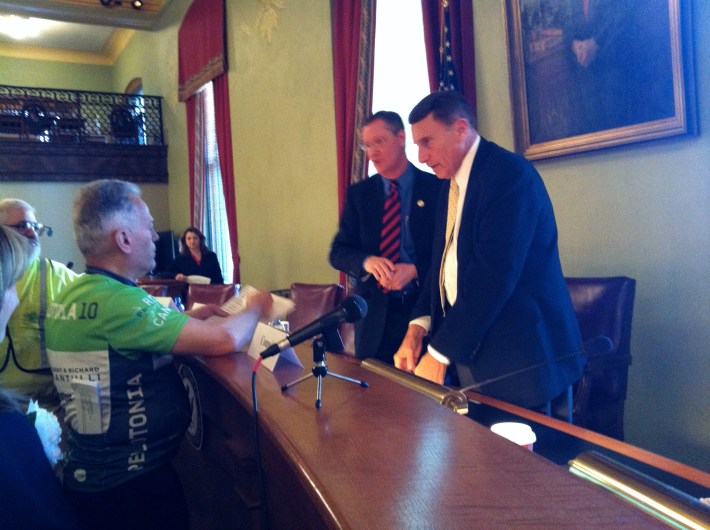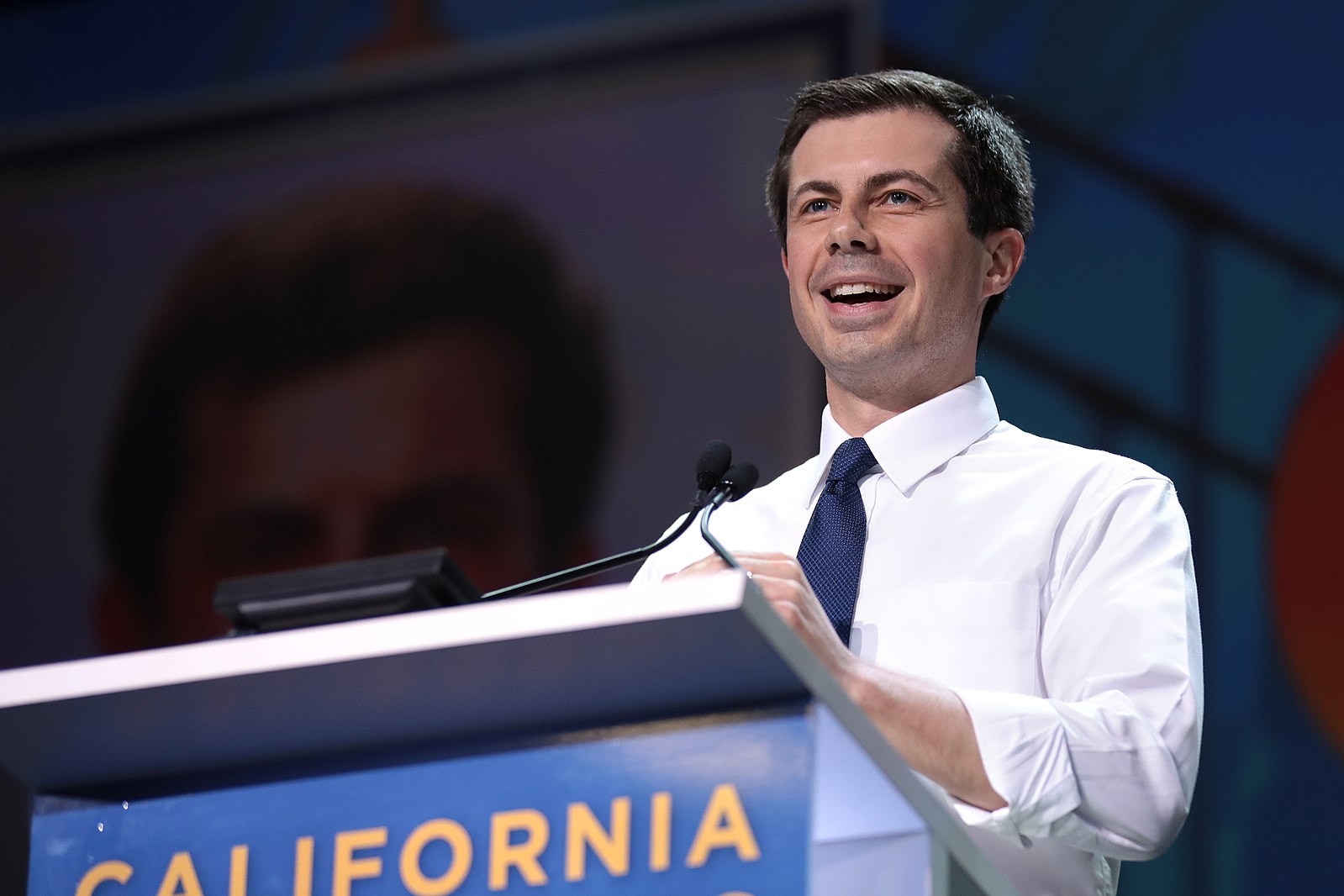Highways Take Center Stage at Columbus Transpo Field Hearing
1:24 PM EST on February 23, 2011
Make federal transportation dollars more flexible. Tie infrastructure investment to economic development. Streamline the construction process.
Those were the suggestions of a panel of Ohio officials at a Congressional Field Hearing on Transportation held Saturday in Columbus.

In a conversation that focused heavily on roads and highways, Ohio leaders implored the federal government to reduce restrictions so that the state can turn around meaningful projects quickly.
Ohio was the first Midwestern stop on a nationwide tour for Transportation and Infrastructure Committee Chair John Mica (R-FL) and other members of committee. Freshman Congressman Steve Stivers, who represents Columbus, also attended, though he is not on the committee.
Rep. Mica opened the discussion by saying that local leaders' comments would be used to develop the elusive six-year transportation bill. He said he refused to settle for a four-year bill like SAFETEA-LU, which expired in October 2009. Mica promised to have an extension of SAFETEA-LU on the floor when Congress comes back from President's Day recess. The committee has already approved a "clean" extension of the bill, which would keep spending levels the same until the House passes a new bill.
"This is our seventh extension, and that hurts our ability to plan," Mica said.
The Florida Congressman also indicated that the new bill would not ignore transit, rail and other modes.
"This will be a transportation bill as well as a highway bill," he said.
The discussion from a panel of Ohio leaders, however, focused heavily on roads and highways.
The local panel featured the head of the state DOT, a highway builder, a rural county engineer, a small-town mayor, two regional government agency heads, a business owner from the trucking industry and an advanced energy entrepreneur.
Ohio Department of Transportation Director Jerry Wray led by saying that the state finances are such that it's time to look beyond the gas tax to fund transportation. Wray also said the 20 percent local match for highway projects may soon be out of reach for the state, and asked for a 90-10 split with the federal government. (Meanwhile, transit projects don't get better than a 50-50 split.) Mica said he did not think a 90-10 split would be possible.
"In Ohio, revenue is leveling off," Wray said. "Construction costs are growing. We estimate in 2011, they will go up 5.5 percent. We will not be able to match federal funds; we will have a difficult time maintaining our existing system."
Another important theme from Ohioans was the importance of leveraging federal transportation investments to support job creation. A recent report by the Brookings Institution [PDF] pointed to the often haphazard way infrastructure funds are distributed in Ohio. The report implored state leaders to prioritize high-impact projects.
Chris Schmenk, the mayor of Marysville, Ohio, said the slow pace of road construction could cost her community jobs. Marysville is home to Honda of America -- a major employer in Central Ohio -- and congestion on a local interstate is costing the company, she said.
"If infrastructure is not working well, it delays things for [Honda], costs them millions of dollars, costs our economy millions of dollars," said Schmeck, who added that an important road project in her community will not be completed until 2019. "What I would like to see is a streamlining. Somehow we need to shorten the process. My little project, if it doesn’t start until 2019, it’s going to cost Ohio jobs."
State leaders also urged the federal government to ease restrictions to encourage more private investment.
Mark Policinski, executive director of the Ohio, Kentucky and Indiana Council of Governments, said he sees a lot of potential in regional infrastructure improvement zones, an economic development tool which provides tax breaks for companies that invest in infrastructure. But the way laws are currently written, companies cannot enjoy the tax benefit if they will directly benefit from the project, Policinski said. Changing that rule could help provide the local match needed to bring projects forward.
Bill Lozier, Deputy Engineer for rural Licking County, also took issue with the road building standards developed by the American Association of State Highway and Transportation Officials. Lozier said that AASHTO's rigid mandates for wide roads do not translate well in a rural setting where, for example, a 60 foot road width would be more appropriate than the 120 feet required by AASHTO. The rigid standards had prevented four or five local projects from moving forward in Licking County in the last few years, Lozier said.
"We need to make an allowance for local government agencies to have their own design standards," said Lozier.
Despite Mica's assurances that the bill will be multi-modal, the invited panelists invited spoke overwhelmingly about roads. Cycling, pedestrian safety and urban transit were not a subject of discussion for any of the panelists. One of them did speak out strongly for passenger rail, though. Barry Fromm, chief of US Railcar, said that the transportation bill must find a way to support rail. Fromm, a manufacturer of self-propelled, diesel-fueled rail cars, asked congressmen to "please recognize the rebirth of this industry in America."
Fromm said he expects his company's next generation of train cars to run at speeds up to 110 mph, with a fraction of the carbon footprint of alternatives. But anti-rail policies like those espoused by Ohio Governor John Kasich have forced him to second-guess building a manufacturing plant for rail cars in Central Ohio.
Meanwhile, a group of cyclists led by Columbus' advocacy group, Consider Biking, were disappointed not to see their interests addressed directly, especially because they see cycling as an important tool for economic development. Executive Director Jeff Stephens said Consider Biking has been working hard to convince the local business community of the economic benefits of cycling and that 23 local CEOs have pledged their support to the campaign.
"We have a brain drain problem in Ohio," said Stephens. "This is one of the pieces: having a livable vibrant community with active transportation options as a means to attract new young professionals and new businesses and startups."
He said he considers Rep. Steve Stivers an ally.
Angie Schmitt is the author of Right of Way: Race, Class and the Silent Epidemic of Pedestrian Deaths in America, and the former editor of Streetsblog USA.
Stay in touch
Sign up for our free newsletter
More from Streetsblog USA
Kiss Wednesday’s Headlines on the Bus
Bus-only lanes result in faster service that saves transit agencies money and helps riders get to work faster.
Four Things to Know About the Historic Automatic Emergency Braking Rule
The new automatic emergency braking rule is an important step forward for road safety — but don't expect it to save many lives on its own.
Who’s to Blame for Tuesday’s Headlines?
Are the people in this photo inherently "vulnerable", or is this car just dangerous?
Why Riders With Disabilities Have To Sue For Accessible Transit Stops
A Bay Area transit agency is only the latest to be sued over inaccessible stations. What will it take to get every American stop ADA compliant?
Monday’s Headlines Reconnect With Pete
More than $3 billion is flowing out of the White House to help correct infrastructure mistakes in Black communities.




